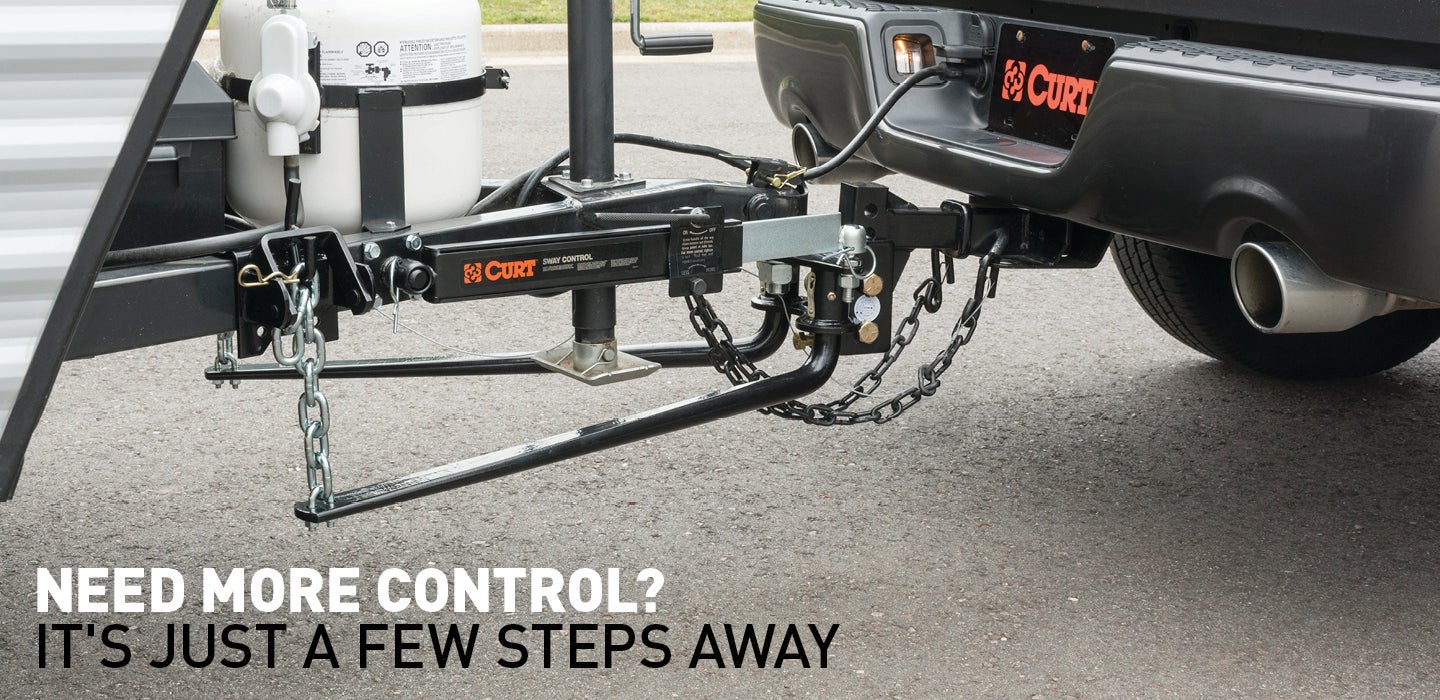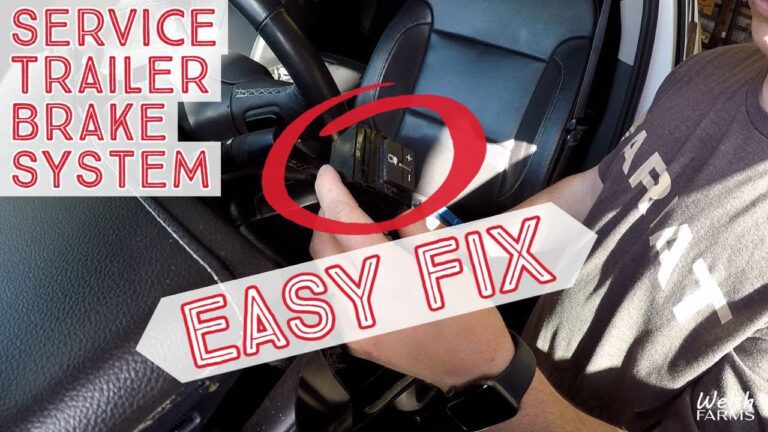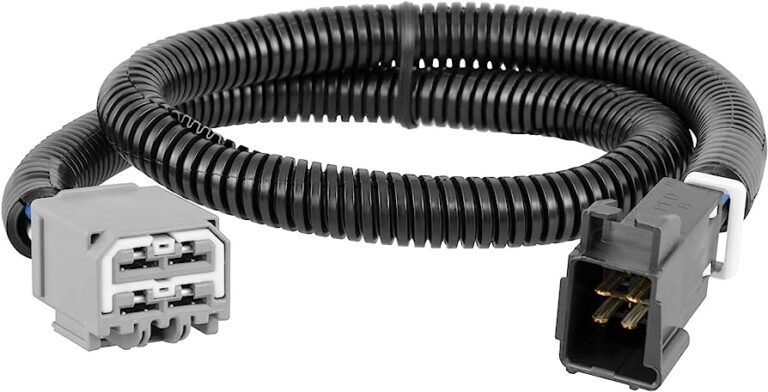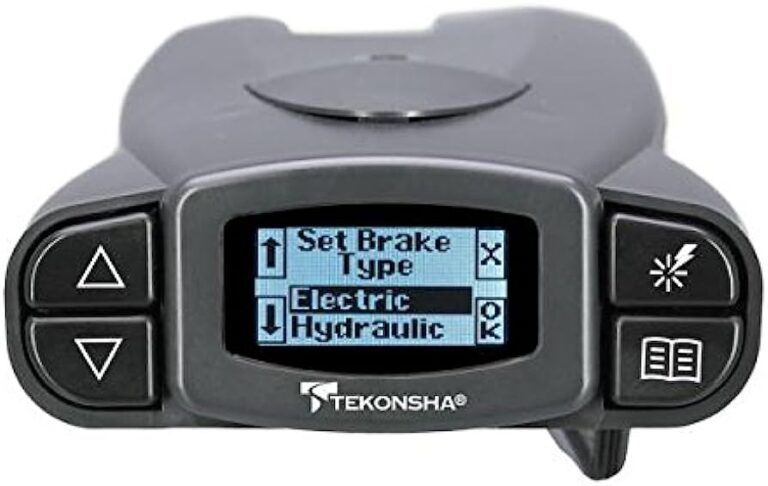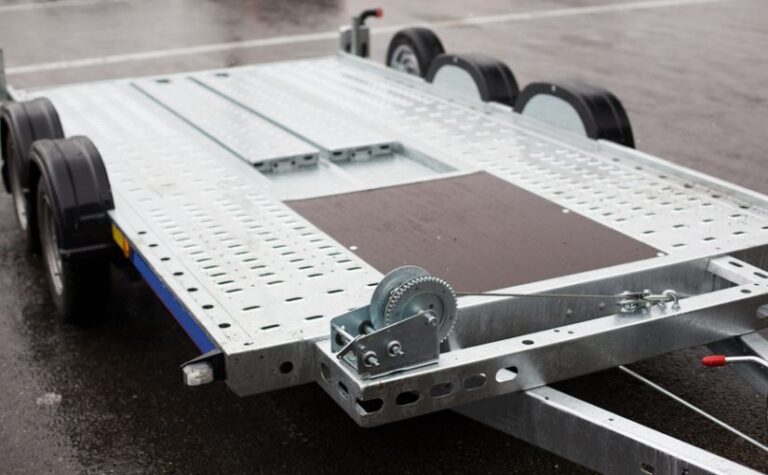Trailer Brake Controller Installation Tools: Must-Have Power Tools for Easy Setup
Trailer brake controller installation requires specific tools for a successful process. These tools include wire cutters, wire strippers, a voltage tester, electrical tape, and a socket wrench.
Additionally, a brake control harness and a brake control mounting bracket may be necessary for certain vehicles. These tools ensure a safe and efficient installation, allowing the driver to have full control over the trailer’s brakes.
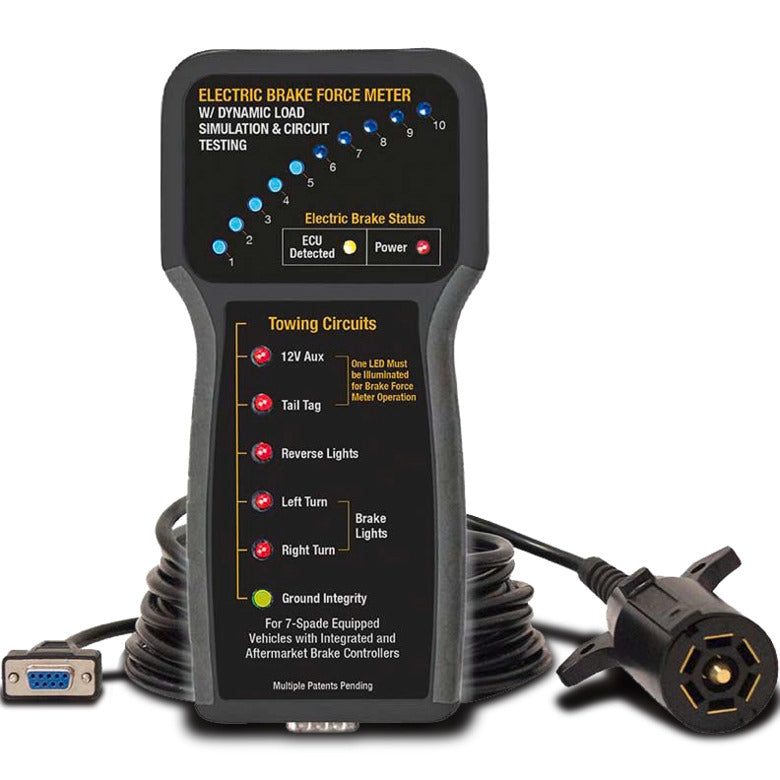
Credit: www.mactools.com
Tools For Measuring And Marking
Impact Of Using Precise Measuring Tools For Accurate Brake Controller Placement
When it comes to installing a trailer brake controller, precision is crucial. Proper placement ensures optimal performance and safety while towing. Using precise measuring tools can greatly impact the installation process. Here are some key points to consider:
- Accurate measurements: Measuring tools such as tape measures or rulers enable precise calculations of distances and dimensions. This ensures the brake controller is positioned correctly in your vehicle.
- Secure mounting: Deciding on the ideal location for the brake controller requires precise measurements. By using measuring tools, you can accurately mark the mounting spot, ensuring a secure and stable installation.
- Functionality optimization: The right placement of the brake controller is essential for optimal functionality. Precise measurements help determine the distance between the controller and the brake pedal, allowing for efficient brake response.
- Safety enhancement: Installing a trailer brake controller in the appropriate location is vital for ensuring your safety on the road. Precise measurements help to position the controller within easy reach and view, minimizing distractions while towing.
- Compliance with regulations: Safety regulations often dictate specific requirements for the placement of trailer brake controllers. Using precise measuring tools helps you adhere to these regulations, avoiding potential legal issues.
Importance Of Marking Tools For Ensuring Proper Alignment And Positioning During Installation
Marking tools play a significant role in the installation process of a trailer brake controller. They help ensure proper alignment and positioning, leading to a successful installation. Here are the key reasons why marking tools are essential:
- Alignment accuracy: Marking tools, such as pencils or chalk, allow you to outline the mounting area accurately. This ensures that the brake controller is aligned properly with your vehicle’s dashboard or console.
- Positioning guidance: Marking tools assist in marking reference points for positioning the brake controller. These marks guide you during the installation process, ensuring the controller is placed precisely where it needs to be.
- Aesthetic appeal: A clean and visually appealing installation is desirable for many vehicle owners. Marking tools aid in marking areas discreetly, resulting in a neat installation without visible marks or damage to the vehicle’s interior.
- Error prevention: Incorrect alignment or positioning during installation can lead to functional issues or damage to the brake controller. Marking tools help prevent errors by providing clear guides, minimizing the risks of misaligned or poorly positioned installations.
- Ease of installation: Marking tools make the installation process smoother and more efficient. The marked points serve as reference markers, allowing for a seamless and straightforward installation procedure.
By utilizing precise measuring and marking tools, you can ensure accurate brake controller placement and a successful installation. This not only improves functionality and safety but also provides peace of mind while towing.
Power Tools For Drilling And Screwdriving
When it comes to installing a trailer brake controller, having the right power tools can make all the difference. In this section, we’ll discuss the impact of using a drill for creating pilot holes in the required locations and the benefits of using a screwdriver for securely attaching the brake controller to the trailer.
Impact Of Using A Drill For Creating Pilot Holes In The Required Locations
Using a drill to create pilot holes before attaching the brake controller can have several advantages:
- Easy installation: Pilot holes guide the drill bit when creating the final hole, making it easier to install the brake controller without any hassle.
- Preventing wood splitting: By creating pilot holes, the drill helps to avoid wood splitting when driving the screw into the trailer.
- Accurate placement: Pilot holes ensure that the screws are inserted at the right angle and in the desired location, ensuring a secure and stable attachment.
Benefits Of Using A Screwdriver For Securely Attaching The Brake Controller To The Trailer
Using a screwdriver for attaching the brake controller offers its own set of benefits:
- Secure attachment: A screwdriver provides the necessary torque to tighten the screws securely, ensuring that the brake controller stays firmly in place while towing the trailer.
- Avoiding damage: Using a screwdriver allows for better control and precision, reducing the risk of overtightening the screws and damaging the brake controller or trailer.
- Versatility: Unlike power tools, screwdrivers are lightweight and portable, making them convenient for installations in tight spaces or when working on-the-go.
Utilizing a drill for creating pilot holes and a screwdriver for attaching the brake controller are crucial steps in ensuring a successful installation. The drill helps with precise placement and prevents wood splitting, while the screwdriver ensures a secure and damage-free attachment.
With these power tools in hand, you can confidently equip your trailer with a brake controller for a smooth and safe towing experience.
Tools For Wiring And Electrical Connections
Importance Of Wire Strippers And Cutters For Preparing The Wires
Preparing the wires for trailer brake controller installation is a crucial step that requires the right tools. Wire strippers and cutters play a vital role in ensuring the wires are properly stripped and cut to the appropriate length. Here are the key points to understand the importance of these tools:
- Wire strippers make the process of removing insulation from the wires quick and efficient.
- They have multiple gauge settings, allowing you to strip wires of different thicknesses.
- By using wire strippers, you can avoid damaging the underlying conductors while removing the insulation.
- Wire cutters enable you to trim the wires to the desired length, ensuring neat and tidy connections.
- They have sharp blades that effortlessly cut through the wires, facilitating accurate measurements.
- Using wire cutters helps prevent frayed ends, which could potentially lead to poor electrical connections.
- Properly prepared wires minimize the risk of short circuits, enhancing overall safety.
Benefits Of Using Crimping Tools For Secure And Reliable Electrical Connections
To establish secure and reliable electrical connections when installing a trailer brake controller, crimping tools are essential. They provide numerous advantages that ensure a sturdy and durable connection. Here are the key benefits:
- Crimping tools allow you to join wires securely by compressing the metal connectors onto the wire strands.
- The resulting connection is strong and resistant to vibration, ensuring uninterrupted electrical flow.
- Crimping eliminates the need for soldering, which can be time-consuming and may result in potential hazards.
- These tools provide consistent and uniform crimps, ensuring consistent connectivity throughout the wiring system.
- By using crimping tools, you avoid the risk of overheating or damaging delicate wires that could occur with soldering.
- Crimped connections are less likely to loosen over time, providing reliable functionality.
- Additionally, crimped connections are easily removable if modifications or repairs are needed.
When it comes to wiring and electrical connections during trailer brake controller installation, wire strippers and cutters are essential for preparing the wires, while crimping tools ensure secure and reliable connections. By utilizing these tools, you can ensure a successful installation with efficient electrical connections that promote safety and longevity.
Power Tools For Mounting And Securing
When it comes to installing a trailer brake controller, having the right power tools can make your job a lot easier. From mounting the brake controller bracket to securely tightening the nuts and bolts, power tools can save you time and effort.
Let’s explore the key points of using these tools for a smooth and efficient installation process.
Impact Of Using A Power Drill For Mounting The Brake Controller Bracket To The Desired Location:
- Precise and efficient: A power drill allows you to quickly and accurately create pilot holes for mounting the brake controller bracket. With its speed and power, you can effortlessly secure the bracket to the desired location.
- Versatility: Power drills come with various drill bits, allowing you to adapt to different surfaces and materials. Whether you need to mount the brake controller bracket on wood, metal, or other surfaces, a power drill can handle it with ease.
- Time-saving: Using a power drill significantly reduces the time required for mounting the brake controller bracket. Instead of manually drilling each hole, a power drill effortlessly powers through the task, freeing up your time for other essential installation steps.
Benefits Of Using A Wrench Or Socket Set For Securely Tightening The Nuts And Bolts:
- Proper torque: When mounting the brake controller, it is crucial to apply the correct torque to ensure a secure and stable installation. The use of a wrench or socket set allows you to achieve the recommended torque specifications, preventing over-tightening or under-tightening of the nuts and bolts.
- Convenience: With a wrench or socket set, you can easily access and tighten nuts and bolts in tight spaces. Their compact design and various sizes enable you to reach even the most challenging areas, ensuring every connection is properly secured.
- Versatility: A wrench or socket set provides a range of sizes, allowing you to work with different sizes of nuts and bolts. No matter the dimensions required for your specific brake controller installation, a wrench or socket set can cover your needs.
- Sturdy and reliable: Using these tools ensures a strong and reliable connection between the brake controller and the mounting surface. With their sturdy construction, wrenches and socket sets offer durability for long-lasting performance.
Power tools such as a power drill, wrench, or socket set play a vital role in the installation of a trailer brake controller. They provide efficiency, precision, and reliability, making your installation process smoother and ensuring the security of your brake controller.
Harness the power of these tools to achieve a professional and secure installation every time.
Tools For Testing And Adjustments
Importance Of A Multimeter For Checking The Voltage And Ensuring Proper Electric Connections
When it comes to installing a trailer brake controller, it is crucial to check the voltage and ensure proper electric connections. This is where a multimeter becomes an essential tool. Here are the key points to understand the importance of using a multimeter for testing and adjustments:
- A multimeter allows you to measure the voltage accurately, ensuring that the brake controller receives the proper electrical power for optimal performance.
- It helps you troubleshoot any electrical issues by checking the voltage at different points in the system.
- Multimeters also allow you to verify the continuity of wires and connections, ensuring that there are no interruptions or faulty components.
- With a multimeter, you can ensure that all electrical connections are secure and properly tightened, preventing any potential hazards or malfunctions.
- It provides peace of mind, as you can confidently verify that the voltage levels are within the recommended range for safe and effective brake controller operation.
Benefits Of Using Wire Testers To Verify The Functionality Of The Brake Controller
Before hitting the road with your trailer, it is essential to verify the functionality of the brake controller to ensure a safe journey. Wire testers prove to be extremely valuable tools for this purpose. Here are the key benefits of using wire testers:
- Wire testers help you identify any faulty wiring connections or short circuits that may affect the brake controller’s performance.
- By testing the wires, you can ensure that the brake signals are being transmitted correctly from the towing vehicle to the trailer.
- Wire testers allow you to diagnose any wiring issues quickly and efficiently, saving you time and potential headaches on the road.
- They help prevent accidents by ensuring that the brake controller is in proper working condition before embarking on your journey.
- Using wire testers also helps you comply with safety regulations and guidelines, promoting a responsible and secure towing experience for you and fellow road users.
Using a multimeter for voltage testing and wire testers to verify the functionality of the brake controller are essential steps in a successful trailer brake controller installation. These tools not only guarantee the proper functioning of the brake controller but also contribute to a safe and worry-free towing experience.
Additional Tools For Easy Setup
Impact Of Using A Level For Ensuring The Brake Controller Is Installed On A Flat Surface
When it comes to installing a trailer brake controller, one important aspect to consider is ensuring that it is installed on a flat surface. Using a level during the installation process can have a significant impact on the functionality and effectiveness of the brake controller.
Here are some key points to understand:
- Alignment: A level helps in aligning the brake controller properly, ensuring that it sits horizontally on the surface. This alignment is crucial for accurate readings and smooth operation while towing.
- Stability: Installing the brake controller on a flat surface using a level helps to maintain stability. This eliminates any unwanted movements or vibrations that may occur during braking, ensuring a secure and safe towing experience.
- Accuracy: A level ensures the brake controller is installed at the correct angle, which is essential for precise braking control. It helps to maintain the right balance and distribution of weight, allowing for more accurate braking responses.
Using a level not only ensures that the brake controller is installed correctly but also contributes to its overall performance and safety.
Benefits Of Using Cable Ties For Organizing And Securing The Wiring During Installation
During the installation of a trailer brake controller, it is crucial to properly organize and secure the wiring to maintain a neat and functional setup. Cable ties can be immensely beneficial in this process. Here are some advantages to using cable ties:
- Neatness: Cable ties help to keep the wiring organized and prevent it from getting tangled or messy. This not only enhances the overall appearance of the installation but also makes troubleshooting and maintenance easier in the future.
- Safety: Securing the wiring using cable ties reduces the risk of accidents caused by loose or exposed wires. It helps to prevent short circuits, electrical malfunctions, and potential damage to other components.
- Durability: Cable ties provide a secure and long-lasting solution for holding the wiring in place. They are designed to withstand various environmental conditions, ensuring that the wiring remains intact and protected even during regular usage and towing.
- Ease of installation: Cable ties are easy to use and install, making the wiring process simpler and more efficient. Their fastening mechanism allows for quick adjustments and modifications when required.
By utilizing cable ties, you can ensure a well-organized, secure, and reliable wiring setup during the installation of your trailer brake controller.
Frequently Asked Questions On Trailer Brake Controller Installation Tools
What Tools Are Needed For Trailer Brake Controller Installation?
To install a trailer brake controller, you will need tools such as a wrench, screwdriver, electrical tester, wire strippers, and a drill.
How Do I Install A Trailer Brake Controller?
To install a trailer brake controller, first, mount it in a convenient location, then connect the brake controller to the vehicle’s wiring system, and finally, adjust the controller settings for optimal braking performance.
Why Is A Trailer Brake Controller Important?
A trailer brake controller is important because it allows you to control and adjust the braking force applied to the trailer when towing, ensuring safe and smooth stops.
Can I Install A Trailer Brake Controller Myself?
Yes, you can install a trailer brake controller yourself by following the installation instructions provided with the controller and using the necessary tools and equipment.
How Does A Trailer Brake Controller Work?
A trailer brake controller works by sensing the brake pressure applied to the tow vehicle and activating the brakes on the trailer accordingly, helping to evenly distribute braking force and prevent swaying or skidding.
What Are The Benefits Of Using A Trailer Brake Controller?
Using a trailer brake controller provides benefits such as improved braking control, increased safety on the road, reduced wear and tear on the tow vehicle, and better overall towing experience.
How Do I Know If My Trailer Brake Controller Is Working Properly?
You can test if your trailer brake controller is working properly by conducting a brake function test, where you apply the brakes and check if the trailer brakes engage and stop the trailer smoothly.
Can I Use Any Brake Controller For My Trailer?
It is recommended to use a brake controller specifically designed for your trailer’s weight and braking system to ensure compatibility and optimal performance. It’s important to consult the manufacturer’s guidelines.
Conclusion
Installing a trailer brake controller is a crucial step in enhancing the safety and performance of your towing experience. With the right tools and a little know-how, you can effortlessly complete this installation process. One essential tool that you should have is a digital multimeter, which enables you to test the electrical connections and ensure they are functioning correctly.
Additionally, a wire crimper and connector kit will allow you to make secure and reliable connections between the brake controller and your vehicle’s electrical system. Finally, don’t forget to have a wire stripper and electrical tape on hand to properly insulate any exposed wires.
By investing in these tools and following the necessary steps, you can easily install a trailer brake controller and enjoy a smoother and safer towing experience. Remember, proper installation not only provides peace of mind but also ensures the safety of your cargo and everyone on the road.

